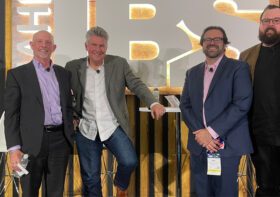REACHing California’s Ambitious Energy Goals

It’s here. The most far-reaching change in residential construction goes into effect January 1, 2020 with the implementation of the new 2019 California Building Code and the toughest energy standards in the country. In addition to requiring significant solar photovoltaic arrays, it will necessitate a re-examination of long-standing construction practices, including insulation, stucco, siding application, attic construction / ventilation, and much more.
As I mentioned in previous blogs, the process and design of buildings will change, requiring close attention to simple roof design that aligns to the solar compass orientation of 90 to 300 degrees from north. Hipped roofs and dormers will largely disappear, and flat roofs will become common. 2×6 exterior studs with either exterior rigid-foam and 1-coat stucco or spray foam insulation will now be standard.
The new codes are designed to reduce wasteful and unnecessary energy consumption in newly constructed buildings, leading the state to an ambitious 100 percent clean energy future by 2045. To date, the existing standards are estimated to have saved billions of dollars in reduced electricity bills. In September 2018, Governor Jerry Brown laid out the plan to “carbon neutrality”, based on the Intergovernmental Panel on Climate Change (IPCC) October 2018 report, thus creating a path to zero emissions. Prepared by 91 lead authors and 133 contributing authors from 40 countries, they concluded that we are near a no-return point of a warming planet with dire outcomes if not corrected in the short term. A key tactic is the curtailment of fossil fuel use.
Several California cities are leading the charge. In March, Carlsbad was the first, requiring heat pump water heaters or solar thermal water heating in new low-rise residential construction. In July, Berkeley famously followed, becoming the “first in the nation” to prohibit the use of natural gas in all new construction. Since then, the cities of Windsor, Santa Rosa and San Luis Obispo have passed ordinances focused on all-electric residential buildings.
On December 11, 2019, the California Energy Commission met to approve six jurisdictions’ energy ordinances that exceed the energy efficiency requirements of the 2019 California Energy Code, in what has become known as REACH. These jurisdictions include the cities of Menlo Park, San Jose, San Mateo, Santa Monica, West Hollywood, and the County of Marin. Other cities including Davis, Mountain View, Morgan Hill, Palo Alto, Alameda, Milpitas, Pacifica, Mill Valley, Saratoga, Brisbane, Healdsburg, and Los Gatos have passed upgraded energy standards aimed at transitioning from gas to electric in new construction.
So, this means that in addition to the new standards applicable to all California cities, developing a project in these jurisdictions will require a deep understanding of their enhanced requirements.
It’s a new year and a new day in how homes are built in California. It requires a careful understanding, upfront during the design process, to meet this new reality. There will be growing pain discomfort, but in the end, this should move us forward toward our long-term sustainable survival.




Leave a Reply